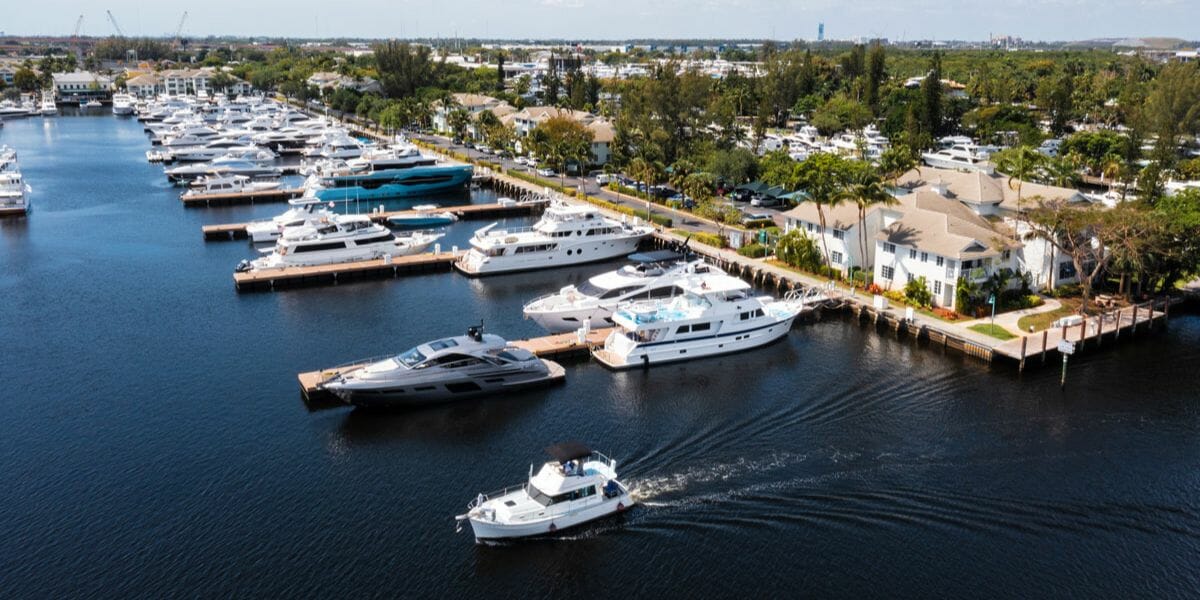
Boating Etiquette: Rules of the Road
If you’re going to be out and about on the water, you should know boating etiquette. It’s very important for the safety of you and your passengers, and it’s also important that you are considerate of others.
It goes along with that age-old adage, “Treat others as you would want to be treated.” Certain “rules of the road,” as it were, should always be kept front and center in your mind and priorities. As well, boating etiquette for guests should be reviewed so everyone will know how to stay safe on the water.
Stand-On Vessel vs Give-Way Vessel
In situations on the water where two boats are trying to share the same space, the “stand-on” boat has the right-of-way, while the “give-way” boat needs to make room for the other to pass. If you encounter a boat coming straight for you, the best scenario would be that both boats turn to starboard (to the right) to safely pass each other. Likewise, if a boat approaches from the right, they are considered the “stand-on” vessel.
Sailboats and Other Watercraft
A sailboat has the right-of-way over a boat powered with an engine, unless the sailboat has an engine, whether the sails are up or not. Watercraft, such as kayaks, canoes, etc., or anything that is “human-powered” has the right of way over any other boat or vessel, including a sailboat.
Boating etiquette says that if a boat is coming up behind you at a faster speed and is about to pass you, you should maintain your speed and course unless doing so would put someone in harm’s way. If you can’t maintain speed and course safely, slow down and let the other vessel pass. The first responsibility as captain of your boat is to keep everyone on board safe.
If you notice another boat having problems, that boat becomes the “stand-on” vessel and you try everything you can to maneuver around it and/or offer assistance.
When two boats are sailing next to each other, the vessel on the starboard tack has the right-of-way. If both are on starboard tack, the boat downwind (or leeward) has the right-of-way.
Other Tips
A few other tips to follow regarding boating etiquette include the following:
- Be prepared before you go out on the water, which means you know how to navigate your boat out on the water from the dock, know how to safely pass by other boats, know how to anchor your boat, and know-how to return and dock your boat safely.
- Know how to launch your boat into the water without hindering other boaters who are trying to do the same thing as you and how to get your boat back out of the water and onto your trailer, safely, efficiently, and in a timely manner.
- Ensure your passengers are knowledgeable about boating etiquette for guests, which includes knowing where to safely stand on the vessel, how to move around safely, and where life jackets can be found if you’re not wearing one.
- Know when and where it is safe to drop anchor.
- Be ready to help other boaters who might need assistance.
- Be friendly and wave to other vessels on the water so they know you see them, and you know they see you.
Conclusion
Following these simple boating etiquette rules can help keep everyone safe on the water. We truly are all in this together. In the boating community, it’s all for one and one for all – boaters help each other out in times of need. Practice safe boating etiquette so everyone can enjoy spending time on the water.
For more boating tips and info, check out our other blog posts. If you’re in need of a new dock, then check out ours! Or, give us a call today. 954-256-0370
AccuDock is a global leader in the design and manufacturing of Floating Docks
CALL 954.785.7557 OR EMAIL [email protected] FOR MORE INFORMATION









